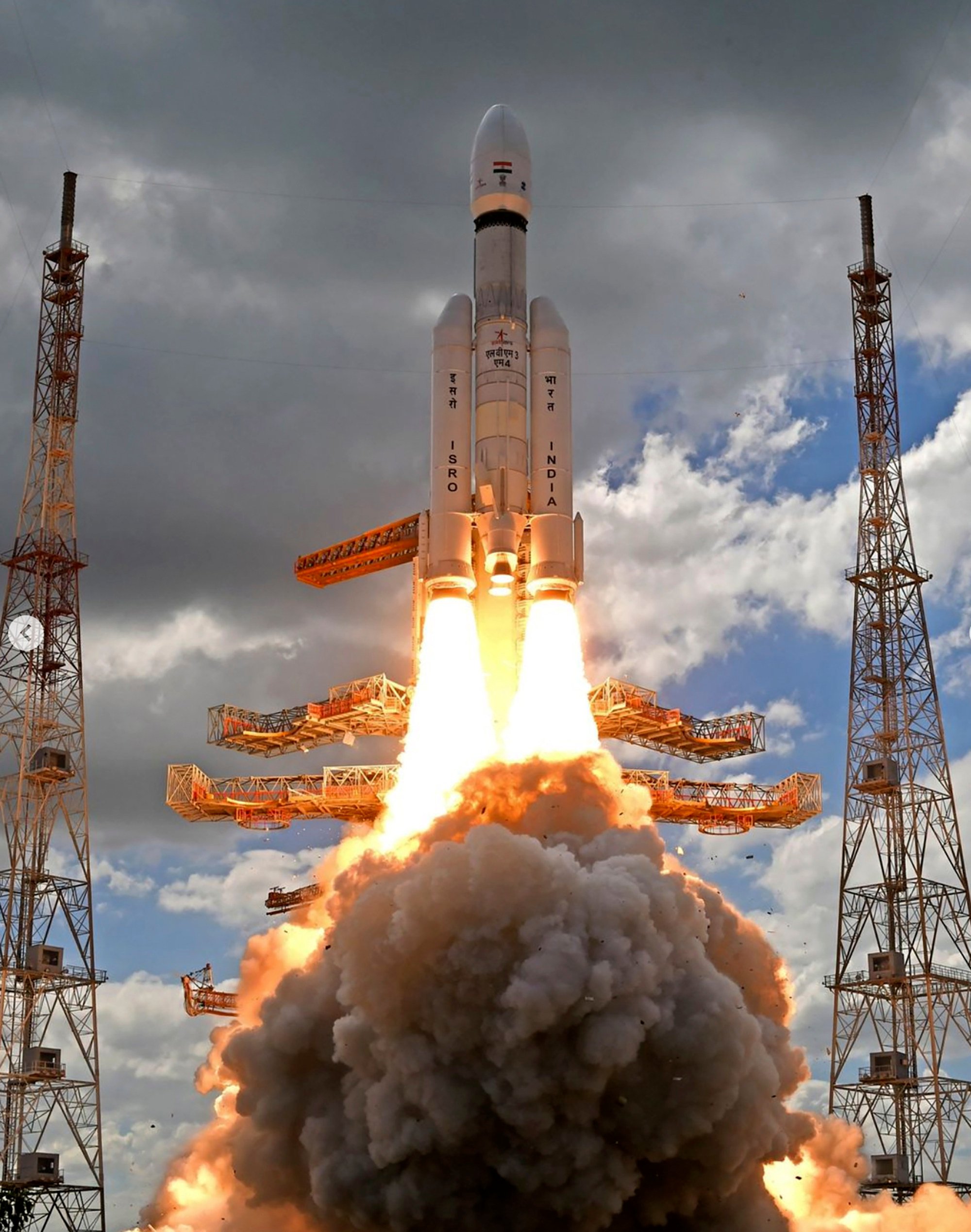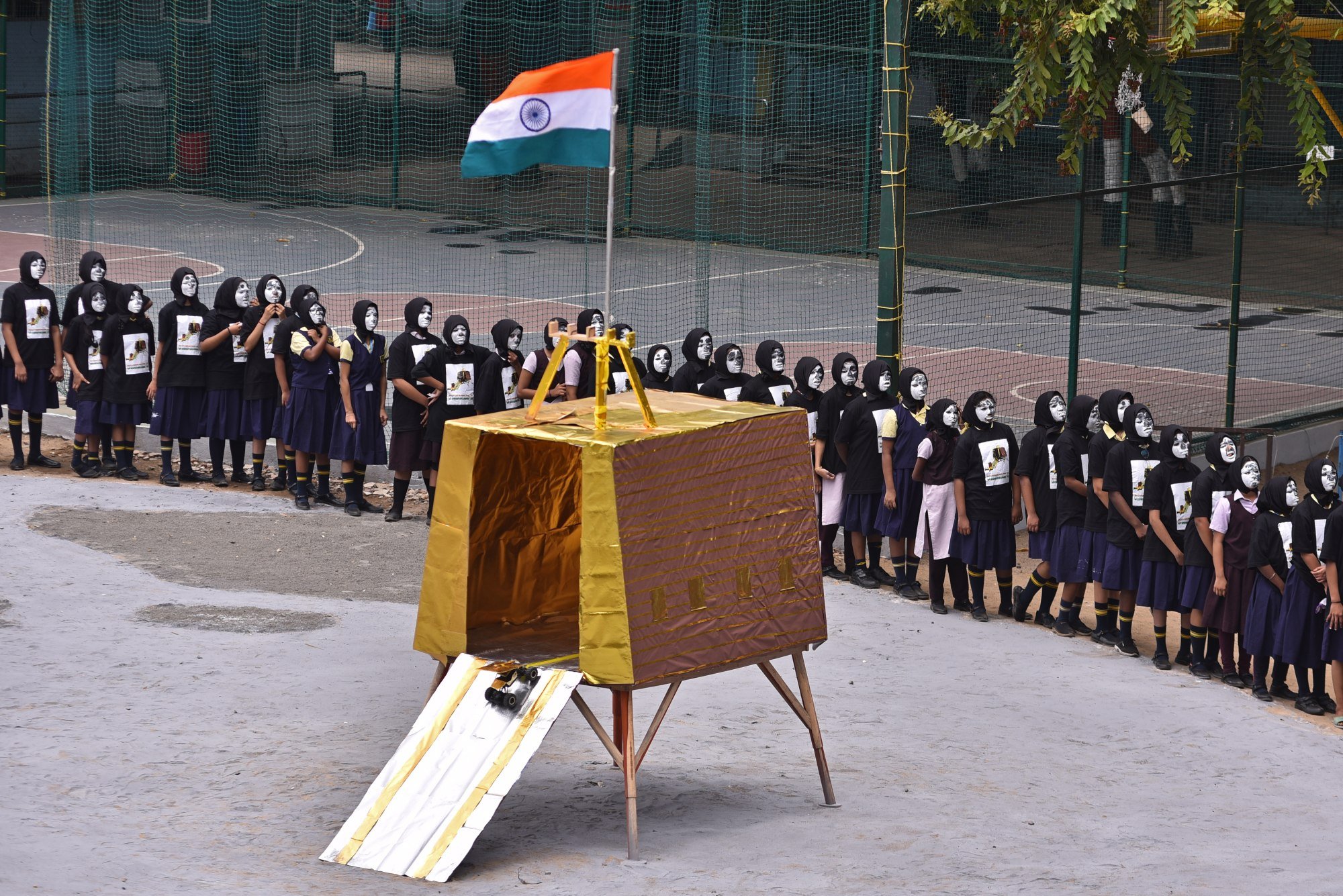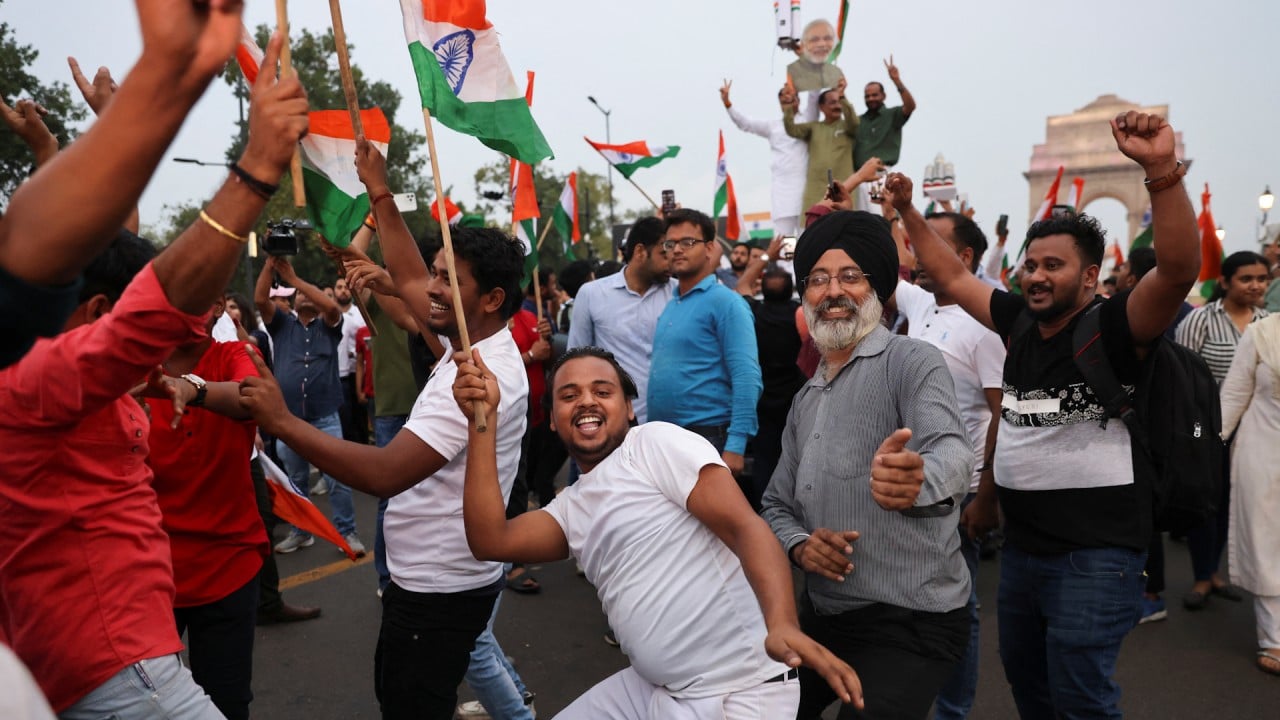
Modi set to hail India’s growing clout at G20 after successful lunar mission
- India, the host of next month’s G20 summit, joins the US, the Soviet Union and China as only the fourth country to achieve a successful moon landing
- India is looking to open the space sector to foreign investment as it eyes a five-fold increase in its share of the global launch market in the next decade
If the rover finds ice sheets on the moon’s surface, it could open up the possibility for humans to find a new habitation on it because it can provide fuel, oxygen and drinking water for future missions.

No other country, however, has been able to land a spacecraft on the moon’s treacherous dark side, the fag end of a journey that has been described as 20 minutes of terror because of the chances of crashing on the boulder-strewn surface.
“We can all aspire for the moon and beyond,” he said, beaming.

Nearly 7 million people viewed the YouTube live stream alone, as millions across the globe tuned in to watch the landing on Wednesday, and schools in India organised live screens. The success sparked jubilation across the nation and people offered prayers of thanks at places of worship.
“This moment signifies new energy, new belief, and new consciousness in India. This moment is the call of India’s ascending destiny,” said Modi, whose efforts to revitalise the country’s global standing has resonated with Indians
Can India keep Ukraine war from overshadowing G20 leaders’ summit?
Booster for development
India has privatised space launches and is looking to open the sector to foreign investment as it targets a five-fold increase in its share of the global launch market within the next decade by highlighting its cost competitiveness.
The ISRO had a budget of around just US$74 million for the Chandrayaan-3 Mission, compared to Nasa’s own estimates of US$93 billion on its Artemis moon programme through 2025.
China made the first ever soft landing on the far side of the moon in 2019 and has more missions planned. Space research firm Euroconsult estimates China spent US$12 billion on its space programme in 2022.
Will frosty India-China ties thaw as Modi, Xi look set to meet at summits?
The successful moon landing is also expected to bolster the nation’s hopes to emerge as a global manufacturing hub as Western nations look to diversify supply chains. Indian trade and business joined in celebrating the moon milestone.
“Over the years, they [the ISRO] have given us many occasions to celebrate through the successes of the Indian space programme. But this stands out in particular,” said Subhrakant Panda, president of the Federation of Indian Chambers of Commerce and Industry.
Dilip Chenoy, chairman of Bharat Web3 Association said the achievement has “united the nation with a sense of pride and achievement”, while Deepak Sood, secretary general of the Associated Chambers of Commerce and Industry of India signified the country’s resolve to “cross all barriers” based “on a solid foundation of science, technology and innovation”.
Satya Gupta, a semiconductor industry veteran behind a new nonprofit group promoting the revitalisation of the domestic electronics sector, said the Chandrayaan-3 mission would have a positive impact in promoting indigenous innovation.

Earlier in June, India became a signatory to the Artemis Accords, a US-led international partnership for a new era of space exploration, one of the goals of which is to increase forays to the lunar surface.
The head of Indian Space Research Organisation, S Somanath, told a packed news conference late on Wednesday that the country had charted plans for a mission to orbit the sun, and another one to Venus, apart from a human space flight.
Somnath said his team of scientists had to virtually start from scratch following the failure of the previous moon mission. “We went through a lot of pain and agony. Most people who were associated with Chandrayaan-2 are part of Chandrayaan-3,” he said.
But the process to rebuild has paid off in Chandrayaan-3, he added. “It’s a made-in-India craft, and the capability that we have today is as good as anybody else.”
Additional reporting by Reuters


